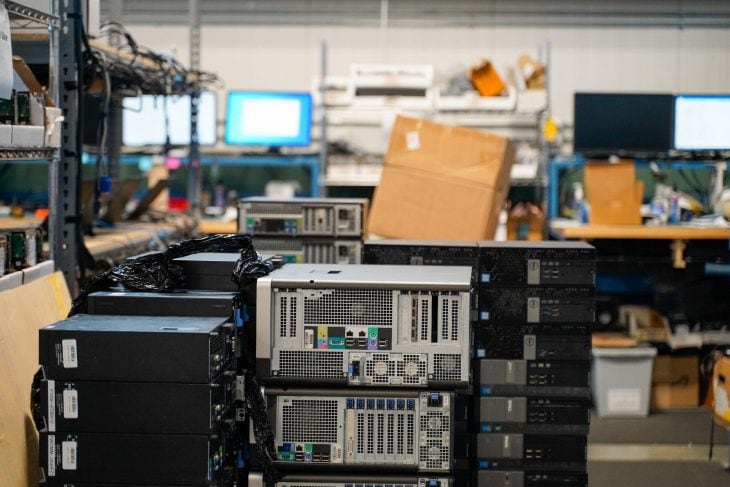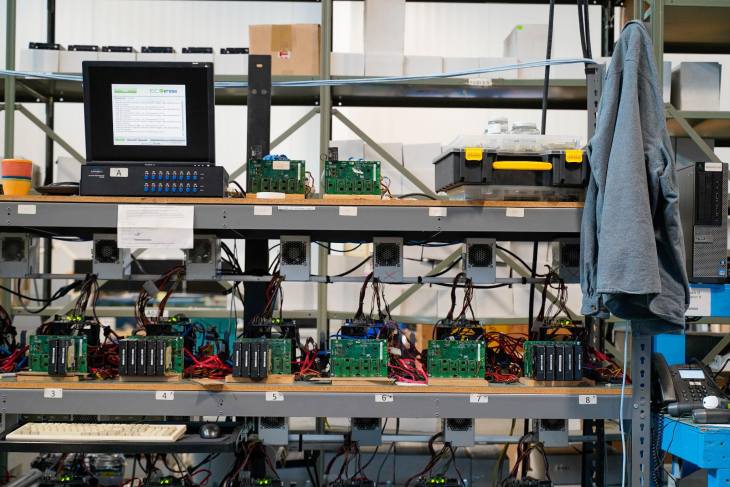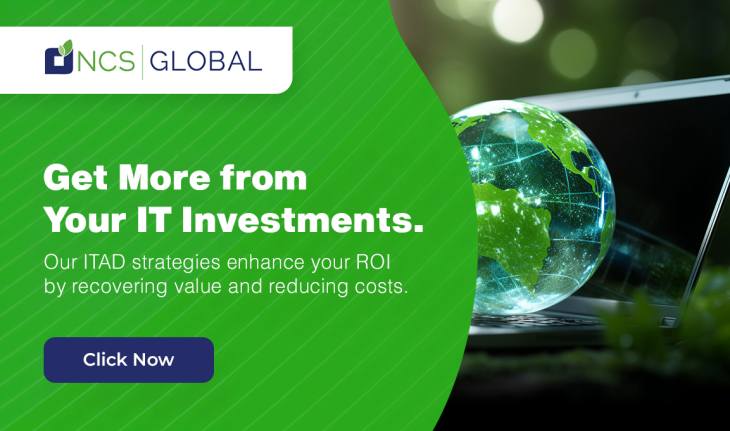From Acquisition to Disposal: Best Practices in IT Lifecycle Management

IT Lifecycle Management (ITLM) is a strategic approach to dealing with all aspects of an organization’s IT assets, from acquisition to disposal. It involves planning, procurement, deployment, maintenance, and decommissioning of IT resources like hardware, software, and services. Effective ITLM helps organizations reduce costs, optimize performance, and align IT investments with business goals, providing a competitive edge in the rapidly evolving digital landscape.
ITLM typically starts with planning, procurement, and deployment. Once deployed, assets move into the maintenance phase, where they undergo updates, patches, and ongoing support to maintain optimal performance. Eventually, assets reach the end of their useful life and enter the decommissioning phase, where they are securely wiped, repurposed, or disposed of properly. This last phase is vitally important but is sometimes overlooked. Organizations that fail to address the complete end-to-end IT asset lifecycle risk security breaches, legal problems, regulatory fines, and more.

The Stages of IT Lifecycle Management
With a disciplined approach to ITLM, organizations can enhance the efficiency and value of their IT assets while ensuring sustainability, security, and cost-effectiveness. Let’s consider each of the key stages in IT lifecycle management:
Planning: Effective strategic planning includes budgeting and forecasting to align IT spending with the organization’s goals, preventing over-investment or underfunding in critical areas. By proactively assessing future needs and aligning IT assets with business strategies, organizations can ensure their technology infrastructure fosters long-term growth and innovation.
Procurement: Procurement involves vendor selection, contract negotiation, and due diligence to ensure that newly acquired assets are compatible with existing systems. Long-term vendor relationships can be vitally important, so procurement often includes assessments of potential vendors’ ongoing viability.
Deployment: Deployment involves the installation, configuration, and integration of new assets into a company’s existing IT infrastructure. Many companies make it a priority to bring assets into operation quickly, ensuring that they rapidly return value to the organization.
Maintenance and Support: Ongoing maintenance and support are essential for maximizing return on investment, and for protecting the organization against cybersecurity threats. Regular software updates, hardware repairs, and access to technical support can prevent system failures and extend the useful life of assets. Proactive maintenance reduces the risk of downtime and ensures that IT resources continue to meet the evolving needs of the business.
Monitoring and Optimization: Continuous monitoring and performance optimization are important especially for network and infrastructure resources. By routinely assessing and fine-tuning performance, organizations can ensure that IT resources are used to their full potential. Optimization efforts also help in forecasting future needs and planning for upgrades or replacements.
End-of-Life Management: Proper end-of-life management of IT assets involves several critical steps: secure data destruction, asset recovery, and responsible disposal to prevent security risks and e-waste.
Businesses must choose an ITAD partner that ensures compliance and data security. NCS Global ensures certified data destruction with EcoErase, our proprietary software that meets NIST & DoD standards and allows on-site deployment with multiple wipe cycles. With NAID certification, NCS Global meets the highest industry standards for secure IT asset disposition.
Industry leaders Blancco and Certus also provide powerful solutions. Blancco specializes in certified, scalable data erasure, helping ITADs maximize device resale. Certus’ Erasure Software, certified by NCSC, ADISA, and Common Criteria EAL3+, securely erases data from various storage devices.
Asset recovery includes refurbishing and reselling devices or harvesting usable parts. IT lifecycle management plays a role in corporate sustainability, with carbon tracking, reporting, and carbon credits becoming key considerations. Responsible recycling, refurbishment, and reuse reduce environmental impact while supporting a circular economy. Companies must dispose of any remaining devices or materials in an environmentally responsible manner.
Benefits of Effective IT Lifecycle Management
Although we have already hinted at some of the benefits of ITLM best practices, it is useful to address each of them specifically:
Cost Efficiency: A disciplined approach to ITLM increases the value per dollar spent on IT assets. Strategic procurement helps organizations acquire the right technology at the best price, while regular maintenance and upgrades extend the life of assets, delaying the need for costly replacements.
Security and Compliance: By keeping software and hardware up to date, IT departments protect against cyber threats and ensure compliance with regulations like GDPR, CCPA, GLBA, and HIPAA. When assets are eventually retired, secure data destruction eliminates the risk of unauthorized access.
Sustainability: ITLM supports environmental sustainability by minimizing e-waste through responsible recycling and reuse of IT assets. By carefully managing the entire lifecycle of their IT equipment, organizations can reduce their carbon footprint and contribute to a circular economy.
Enhanced Performance: Proactive maintenance and optimization improve the reliability and performance of IT systems, significantly reducing downtime. By addressing potential issues before they escalate, organizations can ensure continuous operations and enhance the overall productivity of their workforce, leading to better service delivery and customer satisfaction.
Improved Decision-Making: Comprehensive ITLM provides valuable data and insights that support better decision-making and strategic planning. By having a clear overview of asset performance, usage patterns, and costs, organizations can make informed decisions about future IT investments and operations.

Common Challenges in IT Lifecycle Management
ITLM is not without its complexities. Here are some of the specific challenges that IT leaders face when managing IT assets:
Asset Tracking: Tracking assets throughout their entire lifecycle can be difficult, especially in large organizations with decentralized IT infrastructures. Monitoring a large inventory of devices across multiple locations can be challenging, especially where recordkeeping is inconsistent and adherence to processes is not always disciplined.
Budget Constraints: Most organizations must grapple with budget limitations, and can struggle to maintain operational efficiency while operating within their financial constraints. Leaders must be capable of clearly identifying priorities and following through with decisions that may sometimes hamper their progress.
Security Risks: Outdated or improperly managed IT assets pose significant security risks, including the potential for data breaches and system vulnerabilities. As technology rapidly evolves, older systems may lack the necessary security updates or patches, making them prime targets for cyberattacks. Decommissioned assets pose an especially large risk if they are not handled properly, securely destroying any data stored on them.
Disposal and Compliance: Many organizations get short shrift to end-of-life asset management. Securely and responsibly disposing of IT assets while complying with data protection and environmental regulations is complex, but vitally important. Failure to properly manage asset disposal can lead to legal penalties, reputational damage, and the risk of sensitive information falling into the wrong hands.
Best Practices for Successful IT Lifecycle Management
By applying some fundamental principles of ITLM, organizations can optimize the value produced by their IT investments while protecting themselves from legal, financial, and reputational damage
Centralized IT Asset Management improves visibility and control, helping organizations to streamline processes and reduce the risks associated with loss or underutilization. Centralized management ensures that assets are efficiently deployed, effectively maintained, and safely retired. That ultimately leads to cost savings and enhanced operational efficiency.
Routine Audits ensure that assets are well-maintained, secure, and compliant with regulatory standards. Audits enable IT leaders to identify discrepancies, security vulnerabilities, or compliance issues, and then to take corrective action promptly.
Training and Awareness programs equip employees with the knowledge they need to do their part in effective IT asset management. This is especially important when it comes to security and compliance.
Vendor Partnerships are vital to optimizing the value of IT investments. Strong partnerships often lead to better pricing, improved service, and more efficient processes.
Sustainability Integration is becoming increasingly important, as consumers and regulators devote more attention to corporate responsibility and environmental stewardship. By including decommissioning and disposal in their ITLM strategies, organizations can ensure compliance and improve their sustainability metrics.
Conclusion
By systematically managing IT assets from acquisition through retirement, organizations can ensure that resources are utilized efficiently, avoiding unnecessary expenditures and maximizing the value of their investments. A well-executed ITLM strategy helps in maintaining up-to-date security protocols and compliance with industry regulations, reducing the risk of breaches and non-compliance penalties.
IT professionals should routinely assess and refine their current ITLM policies, leveraging best practices and keeping up with emerging technologies. Continuous improvement in ITLM not only helps to mitigate risks; it also positions organizations to adapt quickly to change.
Interested in leveling up your ITLM strategy? Contact one of our specialists at NCS Global.
